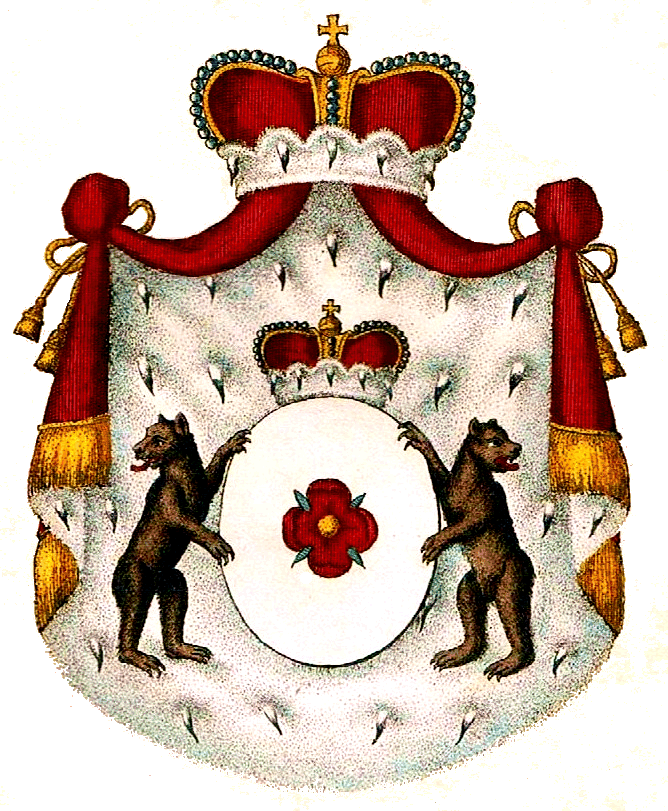|
Keutschach Am See
Keutschach am See () is a municipality in the district of Klagenfurt-Land District, Klagenfurt-Land in the Austrian state of Carinthia (state), Carinthia. Geography The municipality lies in a glacial valley between the Wörthersee Lake and Mt. Pyramidenkogel on the north and the summits of the Sattnitz range on the south. It lies on the east bank of the Keutschacher See, about west of the state capital, Klagenfurt. Other nearby lakes include Hafnersee, Baßgeigensee, and Rauschelesee. Large parts of the valley since 1970 form a protected landscape area. Populated places The municipality of Keutschach am See consists of the following cadastral community, cadastral communities: Keutschach (Hodiše), Plescherken (Plešerka), and St. Nikolai (Šmiklavž); while further subdivided into populated places (with population in brackets as of 1 January 2022). * Dobein (Dobajna) (31) * Dobeinitz (Dobajnica) (94) * Höflein (Dvorec) (146) * Höhe (Na Gori) (146) * Keutschach (Hodiše) (46 ... [...More Info...] [...Related Items...] OR: [Wikipedia] [Google] [Baidu] |
Municipality (Austria)
In the Republic of Austria, the municipality (, sometimes also ) is the administrative division encompassing a single village, town, or city. The municipality has municipal corporation, corporate status and local self-government on the basis of parliamentary democracy, parliamentary-style representative democracy: a municipal council () elected through a form of party-list proportional representation, party-list system enacts municipal laws, a municipal executive board () and a mayor (, grammatical gender, fem. ) appointed by the council are in charge of municipal administration. Austria is currently (January 1, 2020) partitioned into 2,095 municipalities, ranging in population from about fifty (the village of Gramais in Tyrol (state), Tyrol) to almost two million (the city of Vienna). There is no unincorporated area, unincorporated territory in Austria. Basics The existence of municipalities and their role as carriers of the right to self-administration are guaranteed by the ... [...More Info...] [...Related Items...] OR: [Wikipedia] [Google] [Baidu] |
Hafnersee
Hafnersee is a small natural lake (0.159397 km²) of Carinthia, Austria Austria, formally the Republic of Austria, is a landlocked country in Central Europe, lying in the Eastern Alps. It is a federation of nine Federal states of Austria, states, of which the capital Vienna is the List of largest cities in Aust .... File:AUT — Kärnten — Bezirk Klagenfurt — Gemeinde Keutschach am See — Keutschach am See Dorf — Plescherken (Hafnersee) Mattes 2022-07-18.jpg, sunset Lakes of Carinthia {{Carinthia-geo-stub ... [...More Info...] [...Related Items...] OR: [Wikipedia] [Google] [Baidu] |
Social Democratic Party Of Austria
The Social Democratic Party of Austria ( , SPÖ) is a social democratic political party in Austria. Founded in 1889 as the Social Democratic Workers' Party of Austria (, SDAPÖ) and later known as the Socialist Party of Austria () from 1945 until 1991, the party is the oldest extant political party in Austria. Along with the Austrian People's Party (ÖVP), it is one of the country's two traditional major parties. It is positioned on the centre-left on the political spectrum. Since June 2023, the party has been led by Andreas Babler. It is currently the third largest of five parties in the National Council, having won 41 of 183 seats and 21.1% of the popular vote in the 2024 Austrian legislative election. It holds seats in the legislatures of all nine states; of these, it is the largest party in three ( Burgenland, Carinthia, and Vienna.) The SPÖ is supportive of Austria's membership in the European Union, and it is a member of the Progressive Alliance and Party of Euro ... [...More Info...] [...Related Items...] OR: [Wikipedia] [Google] [Baidu] |
Orsini-Rosenberg
The House of Orsini-Rosenberg (also Ursin-Rosenberg) is the name of an old Austrian noble family. The family is mediatized and as such belongs to the high nobility. It originally sprang out from the Graben family (an apparent or illegitimate branch of the House of Meinhardin) from Castle Alt-Grabenhofen near the city of Graz. History The earliest known member of the Orsini-Rosenberg family, Konrad (von Graben) ab dem Roesenperg, lived around 1322. He was a member of the lower nobility who lived at Schloss Alt-Grabenhofen, between ''Reinerkogel'' and ''Rosenberg''. During the 17th and 18th centuries, the success of the family arose from the steady accumulation of land, and loyalty to the Habsburg Emperor. On 2 August 1633, Johann Andreas von Rosenberg, ''Herr von Rosenberg'', was elevated to the ''Reichsfreiherrenstand'' with the title of ''Freiherr of the Holy Roman Empire, Freiherr of Lerchenau, Herr of Magereckh and Grafenstein'', and in 1648 to the Austrian ''Grafenstand ... [...More Info...] [...Related Items...] OR: [Wikipedia] [Google] [Baidu] |
Baroque Architecture
Baroque architecture is a highly decorative and theatrical style which appeared in Italy in the late 16th century and gradually spread across Europe. It was originally introduced by the Catholic Church, particularly by the Jesuits, as a means to combat the Reformation and the Protestantism, Protestant church with a new architecture that inspired surprise and awe. It reached its peak in the High Baroque (1625–1675), when it was used in churches and palaces in Italy, Spain, Portugal, France, Bavaria and Austria. In the Late Baroque period (1675–1750), it reached as far as Russia, the Ottoman Baroque architecture, Ottoman Empire and the Spanish colonization of the Americas, Spanish and Portuguese colonization of the Americas, Portuguese colonies in Latin America. In about 1730, an even more elaborately decorative variant called Rococo appeared and flourished in Central Europe. Baroque architects took the basic elements of Renaissance architecture, including domes and colonnades, ... [...More Info...] [...Related Items...] OR: [Wikipedia] [Google] [Baidu] |
Renaissance Architecture
Renaissance architecture is the European architecture of the period between the early 15th and early 16th centuries in different regions, demonstrating a conscious revival and development of certain elements of Ancient Greece, ancient Greek and Ancient Rome, Roman thought and material culture. Stylistically, Renaissance architecture followed Gothic architecture and was succeeded by Baroque architecture and neoclassical architecture. Developed first in Florence, with Filippo Brunelleschi as one of its innovators, the Renaissance style quickly spread to other Italian cities. The style was carried to other parts of Europe at different dates and with varying degrees of impact. It began in Florence in the early 15th century and reflected a revival of classical Greek and Roman principles such as symmetry, proportion, and geometry. This movement was supported by wealthy patrons, including the Medici family and the Catholic Church, who commissioned works to display both religious devot ... [...More Info...] [...Related Items...] OR: [Wikipedia] [Google] [Baidu] |
Archbishopric Of Salzburg
The Prince-Archbishopric of Salzburg (; ) was an ecclesiastical principality and state of the Holy Roman Empire. It comprised the secular territory ruled by the archbishops of Salzburg, as distinguished from the much larger Catholic diocese founded in 739 by Saint Boniface in the German stem duchy of Bavaria. The capital of the archbishopric was Salzburg, the former Roman city of '. From the late 13th century onwards, the archbishops gradually reached the status of Imperial immediacy and independence from the Bavarian dukes. Salzburg remained an ecclesiastical principality until its secularisation to the short-lived Electorate of Salzburg (later Duchy of Salzburg) in 1803. Members of the Bavarian Circle from 1500, the prince-archbishops bore the title of ', though they never obtained electoral dignity; actually of the six German prince-archbishoprics (with Mainz, Cologne and Trier), Magdeburg, Bremen and Salzburg received nothing from the Golden Bull of 1356. The last prin ... [...More Info...] [...Related Items...] OR: [Wikipedia] [Google] [Baidu] |
Leonhard Von Keutschach
Leonhard von Keutschach (c. 1442 – 8 June 1519) was Archbishopric of Salzburg, Prince-Archbishop of Salzburg from 1495 until his death, the last to rule in the feudalism, feudal style. Biography He was probably born at Viktring Abbey, Viktring in Duchy of Carinthia, Carinthia, the son of Otto von Keutschach, a judge at the manorial court (''Hofrichter''), and Gertrud von Möderndorf. The Keutschach family came from the northern shore of Keutschach am See, Lake Keutschach. Their arms are a white turnip on a black field. Leonhard started out as Canon (priest), canon of the Augustinians, Augustinian order and Provost (religion), provost of Eberndorf Abbey. In 1490 he was promoted as provost of the Salzburg chapter (religion), chapter and in 1495 was elected Prince-bishop, prince-archbishop. In 1498 he again expelled the Salzburg Jews, who had returned to the area since their banishment in 1404, and had their synagogues at Salzburg and Hallein destroyed. The City of Salzburg was ... [...More Info...] [...Related Items...] OR: [Wikipedia] [Google] [Baidu] |
Duchy Of Carinthia
The Duchy of Carinthia (; ; ) was a duchy located in southern Austria and parts of northern Slovenia. It was separated from the Duchy of Bavaria in 976, and was the first newly created Imperial State after the original German stem duchies. Carinthia remained a State of the Holy Roman Empire until its dissolution in 1806, though from 1335 it was ruled within the Austrian dominions of the Habsburg dynasty. A constituent part of the Habsburg monarchy and of the Austrian Empire, it remained a Cisleithanian crown land of Austria-Hungary until 1918. By the 1920 Carinthian plebiscite in October 1920, the main area of the duchy formed the Austrian state of Carinthia. History In the seventh century the area was part of the Slavic principality of Carantania, which fell under the suzerainty of Duke Odilo of Bavaria in about 743. The Bavarian stem duchy was incorporated into the Carolingian Empire when Charlemagne deposed Odilo's son Duke Tassilo III in 788. In the 843 partition b ... [...More Info...] [...Related Items...] OR: [Wikipedia] [Google] [Baidu] |
Keutschach Am See - Aussichtsturm Pyramidenkogel (b)
Keutschach am See () is a municipality in the district of Klagenfurt-Land in the Austrian state of Carinthia. Geography The municipality lies in a glacial valley between the Wörthersee Lake and Mt. Pyramidenkogel on the north and the summits of the Sattnitz range on the south. It lies on the east bank of the Keutschacher See, about west of the state capital, Klagenfurt. Other nearby lakes include Hafnersee, Baßgeigensee, and Rauschelesee. Large parts of the valley since 1970 form a protected landscape area. Populated places The municipality of Keutschach am See consists of the following cadastral communities: Keutschach (Hodiše), Plescherken (Plešerka), and St. Nikolai (Šmiklavž); while further subdivided into populated places (with population in brackets as of 1 January 2022). * Dobein (Dobajna) (31) * Dobeinitz (Dobajnica) (94) * Höflein (Dvorec) (146) * Höhe (Na Gori) (146) * Keutschach (Hodiše) (463) * Leisbach (Ležbe) (119) * Linden (Lipa) (105) * Pertits ... [...More Info...] [...Related Items...] OR: [Wikipedia] [Google] [Baidu] |
Carinthian Slovenes
Carinthian Slovenes or Carinthian Slovenians (; ; ) are the Indigenous peoples, indigenous minority of Slovenes, Slovene ethnicity, living within borders of the Austrian state of Carinthia, neighboring Slovenia. Their status of the minority group is guaranteed in principle by the Constitution of Austria and under international law, and have seats in the National Ethnic Groups Advisory Council. History The present-day Slovene-speaking area was initially settled towards the end of the early medieval Migration Period by, among others, the West Slavs, West Slavic peoples, and thereafter eventually by the South Slavs, who became the predominant group (see Slavic settlement of Eastern Alps). A South Slavic informal language with western Slavonic influence arose. At the end of the migration period, a Slavic proto-state called Carantania, the precursor of the later Duchy of Carinthia, arose; it extended far beyond the present area of the present state and its political center is said to ... [...More Info...] [...Related Items...] OR: [Wikipedia] [Google] [Baidu] |








